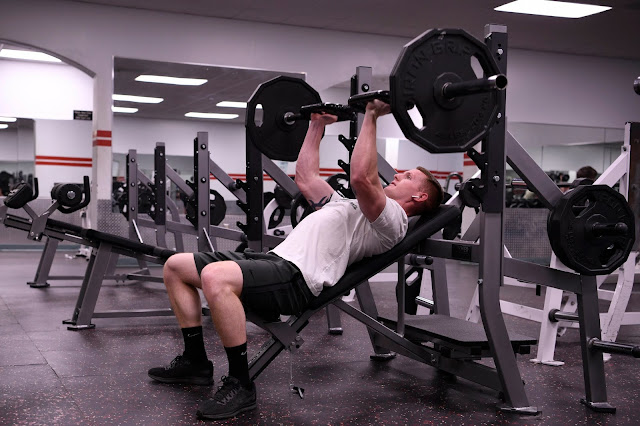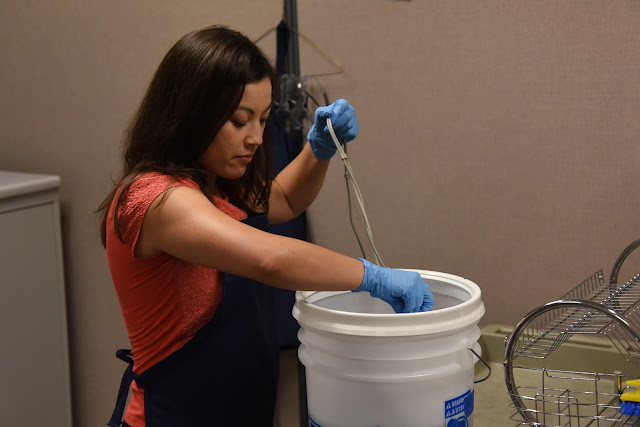Will the real Army fitness test please stand up?
Story by Capt. Joe Legros
Michigan National Guard
Why would anyone change the beloved Army Physical Fitness Test?
After all, sit-ups, push-ups and a two-mile run have successfully assessed Soldier physical readiness for the last forty years, right? Not exactly.
The APFT has been utilized since the early 1980s. It has also served as a basis for job performance, promotion and retention of countless Soldiers. However, as a combat readiness predictor, the assessment meets strong resistance.
For this reason, a handful of Soldiers gathered on Fort Custer Training Center’s sweltering, quarter-mile track September 5, 2019, to conduct a different, new and improved, physical assessment.
Enter the Army Combat Fitness Test, coming to an armory and track near you.
According to the Army’s ACFT website, “The APFT is assessed to have 40 percent predictive power for combat performance; the ACFT is assessed to have 80 percent predictive power.”
“The ACFT will better connect fitness with combat readiness for all Soldiers.*”
Sounds good, but please take away sit-ups and the two-mile run. Is that too much to ask? Hundreds, if not thousands of Soldiers will rejoice at the fact that sit-ups no longer have a place at the Army’s fitness table. However, the new ACFT features six events, doubling the APFT’s offering, and core fitness is required for most of them.
Additionally, the ACFT requires equipment such as a hexagonal deadlift bar, pull-up bars, kettle bells, a medicine ball and a weighted sled for dragging.
The six events include a three-repetition maximum deadlift, a standing power throw of a 10-pound medicine ball, the hand-release push-up, the sprint-drag-carry event, a hanging leg tuck and, everyone’s favorite: the two-mile run. Yes, it remains.
To familiarize Soldiers with the new events, the Michigan National Guard hired two full-time level-three ACFT trainers in May 2019. Capt. Paul Fitzpatrick of Charlie Company, 3-238th General Support Aviation Battalion, 1-147th Assault Helicopter Regiment, was named the ACFT project manager with Sgt. Benjamin Gartner of the 1-126th Infantry Battalion as his noncommissioned officer in charge.
“Why keep the two-mile run?” responded Fitzpatrick. “It’s still a good assessment of a Soldier’s aerobic capacity and endurance. This correlates to ruck marching, land navigation or any type of work that requires longer than 10 minutes to complete.”
Year to date, Fitzpatrick and Gartner have trained 150 Michigan National Guardsmen, certifying them as level-two trainers for their individual units. Level-twos can administer the new test to others and certify level-one trainers to assist with grading.
“The ACFT works hard to tie each event to common Soldier movements in the field,” said Gartner. “We teach level-two trainers that every event has a combat purpose.”
Once level-two trainers return to their home units, they relay this knowledge to their fellow Soldiers.
“Overall, I’d say the ACFT is a far better, fuller assessment of what makes a good Soldier,” said newly minted level-two trainer Staff Sgt. Luke Fuentes, finance section NCOIC 177th Military Police Brigade. “The previous test did not take any measurement of dragging objects or lifting objects. With the ACFT, all bases are covered.”
For instance, the three-repetition max deadlift is meant to assess a Soldier’s muscular strength in picking up heavy objects. “This would be similar to lifting a litter while carrying a wounded Soldier to safety,” said Fitzpatrick.
In a similar way, the leg tuck measures upper body and core strength. While hanging from a pull-up bar, Soldiers are required to bend and lift their legs upward, touching knees or thighs to their elbows.
“This replicates surmounting any type of obstacle or climbing a rope,” reiterated Fitzpatrick.
While the leg tuck seems to be a much-needed addition to the new ACFT, Fitzpatrick added that he’s a little surprised at the lack of fitness in this event, noting “Soldiers’ inability to complete even one leg tuck.” With new events such as the leg tuck added to the fitness test, it is likely just a matter of time before Soldiers incorporate pull-ups and leg tucks into their workout routines.
Every Soldier has their kryptonite, or the one thing that challenges them the most in any fitness assessment. However, the event which seems most adept at crushing souls is the sprint-drag-carry.
Soldiers begin the event lying face-down in a prone position. On command of “go,” Soldiers get up and sprint 25 meters down, then 25 meters back to the starting line. This completes one of five relays of 50 meters, or 250 total meters by the time the event is finished, under four minutes later.
The second relay requires Soldiers to drag a sled weighted down with 90 pounds. About 25 meters into this section, certain body parts begin to protest. Legs turn to jelly and several Soldiers being trained at Fort Custer today are visibly challenged by the sled.
The next 50 meters consists of a sidestep shuffle as legs begin to recover slightly. However, the fourth relay provides Soldiers more weight to lug. This time around, two 40-pound kettle bells must be picked up and carried.
The fifth and final 50 meter relay is a finishing sprint. Mercifully, no weight must be moved or dragged during the final sprint.
“Can you drag Soldiers? Can you move ammo? Can you push yourself off the ground?” asked Fuentes. “The new ACFT hits everything.”
As if the sprint-drag-carry was not enough, Soldiers must still complete two more events immediately afterward: the leg tuck and the 2-mile run.
Of course, rest time is provided between events. However, unlike the APFT, the new test is age and gender-neutral. Standards are the same across the board, with one new wrinkle.
Instead of age and gender differences, the Army categorized military occupational specialties and unit types into three segments. Minimum standards for each event are tiered according to “heavy,” “significant” or “moderate” physical demands.
In other words, Soldiers with a more physically demanding, or heavy MOS will be required to meet heavier ACFT standards. Others with a significant or moderate MOS will have lower minimum standards.
Those Soldiers on permanent profile will be able to complete run alternatives with a choice between a five kilometer row, 15 kilometer bike or 1000 meter swim. The swim distance just recently changed from the initial proposal’s 1200 meters. The alternate event must be completed in 25 minutes or less to pass, and they are only available to those on permanent profile.
Soldiers may be tempted to think the ACFT will not get off the ground. Think again. The implementation process is right on schedule.
In fact, it will be the test of record for all training courses that start on or after Oct. 1, 2019, to include basic combat training, advanced individual training, one-station unit training, basic officer leader courses and warrant officer basic courses.
However, it will likely undergo some minor adjustments prior to full implementation in October 2020. In the meantime, what should Soldiers do in preparation?
“My recommendation to those unfamiliar with the ACFT is to go online and search.
“Other than that, go out there and deadlift, run, lift weights and stretch,” added Fuentes. “Do everything you can to be a better Soldier.”




Comments
Post a Comment